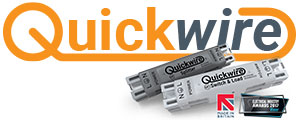Dartlec
Arms
If as it seems, Type A RCDs will become the standard in the next BS7671 which won't be fully in force till 2023, then that would seem the time to introduce this level of consideration for RCD types.
If we can still get a satisfactory EICR on properties without RCD protection at all, then I don't see how we can give an unsatisfactory to one that does - unless there is a clear case like a car charger, PV, etc. where a Type A is mandated.
I'm also a little wary of manufacturers of 'end user' white goods specifying things when it is often to avoid them having to make improvements to their products. As far as the end user is concerned, if it comes with a 1363 Plug, then it fits into a 1363 socket - and is either rated at 3A or 13A.
What would happen if a washing machine manufacturer makes a deal with Wylex and states that only a specific Wylex model RCD must be fitted?
Have there been any real world incidents of injuries caused by this situation as yet? It's hard to grasp how much of a practical risk it is, even though the theoretical risk is clear enough. If there is actually a significant risk out there now, then more should be done than expecting EICRs to always pick up the issue.
If we can still get a satisfactory EICR on properties without RCD protection at all, then I don't see how we can give an unsatisfactory to one that does - unless there is a clear case like a car charger, PV, etc. where a Type A is mandated.
I'm also a little wary of manufacturers of 'end user' white goods specifying things when it is often to avoid them having to make improvements to their products. As far as the end user is concerned, if it comes with a 1363 Plug, then it fits into a 1363 socket - and is either rated at 3A or 13A.
What would happen if a washing machine manufacturer makes a deal with Wylex and states that only a specific Wylex model RCD must be fitted?
Have there been any real world incidents of injuries caused by this situation as yet? It's hard to grasp how much of a practical risk it is, even though the theoretical risk is clear enough. If there is actually a significant risk out there now, then more should be done than expecting EICRs to always pick up the issue.










